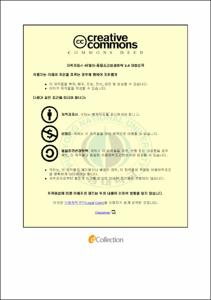고등학교 일본어 교과서에 나타난 「맞장구」사용 분석
- Alternative Title
- The Use Analysis of 「aizuchi(あいづち)」in Japanese Textbooks of High School
- Abstract
- Abstract
「aizuchi(あいづち)」is an essential part in Japanese education because of its own characteristics encouraging the speaker to participaint in conversation and high frequency of use. Unless it is important, there are few chances to learn about it.
Therefore this study would help learners to consider 「aizuchi(あいづち)」as an important part through investigation of the use analysis. There are two ways to analyze the function and forms of expression of 「aizuchi(あいづち)」.
Firstly, it is to compare the way of expression and frequency of use between textbooks and actual conversation in dramas. Secondly, it is to compare their feature in different situation related to social condition such as intimacy, age, gender.
The result of analysis is as follows.
Fist, there is difference of way of expression between textbooks and dramas. Typical reaction(「aizuchi(あいづち)」), ‘そう系’, ‘複合系’, ‘その他’, is easily found in the textbooks but in the dramas, simple reaction(「aizuchi(あいづち)」), ‘あ系’, ‘はい系’, ‘え系’, is shown.
Second, there are two types of 「aizuchi(あいづち)」, works used very often and the others which are not. Most 「aizuchi(あいづち)」in the textbooks is 「そうですか」, 「そうですね」, 「ええ」, 「はい」etc. But in the dramas 「はい」, 「うん」, 「え?」, 「あ」etc. is found. Moreover, some 「aizuchi(あいづち)」which is spoken frequently has the variety range of usage.
Third, the usage of 「aizuchi(あいづち)」can be different by relationship.
As previously stated,「aizuchi(あいづち)」should not be taught as Japanese favorite words but the words that has the functional effect by showing specific examples. Furthermore certain scenes from the dramas can help learners to understand it much more easily.
In addition, it is needed to understand that the usage of 「aizuchi(あいづち)」 is diverse because of social factors like personal relation.
Task to be sloved is more various scenes including real conversation like on the phone, talk show, film etc. should be introduced to analyze more 「aizuchi(あいづち)」, because the study sets limit on only the dramas. Moreover, it is necessary to inquire into nonverbal 「aizuchi(あいづち)」 which is seen in the dramas.
- Issued Date
- 2011
- Awarded Date
- 2011. 8
- Type
- Dissertation
- Keyword
- 맞장구 고등학교 일본어 교과서
- Publisher
- 부경대학교 교육대학원
- Alternative Author(s)
- Hur,Young Joo
- Affiliation
- 부경대학교
- Department
- 교육대학원 일어교육전공
- Advisor
- 손동주
- Table Of Contents
- 목 차
Ⅰ. 서론 1
1. 연구목적 1
2. 선행연구 3
3. 연구대상 및 방법 6
Ⅱ. 본론 8
1. 맞장구의 개관 8
1-1 맞장구의 정의 8
1-2 맞장구의 기능 9
1-3 맞장구의 표현형식 15
1-4 맞장구의 빈도 18
1-5 맞장구와 대인관계요인 19
2. 교과서 분석 21
2-1 맞장구의 종합적 분포양상 23
2-1-1 기능별 출현빈도 23
2-1-2 표현형식별 출현빈도 24
2-1-3 각 기능별 표현형식의 사용상황 26
2-2 교과서별 맞장구 운용실태 31
2-3 대인관계에 따른 맞장구 사용상황 55
2-3-1 친소관계에 따른 사용상황 57
2-3-2 성별에 따른 사용상황 61
2-3-3 연령에 따른 사용상황 65
3. 드라마 분석 70
3-1 맞장구의 종합적 분포양상 70
3-1-1 기능별 출현빈도 70
3-1-2 표현형식별 출현빈도 71
3-1-3 각 기능별 표현형식의 사용상황 73
3-2 대인관계에 따른 맞장구 사용상황 76
3-2-1 친소관계에 따른 사용상황 76
3-2-2 성별에 따른 사용상황 78
3-2-3 연령에 따른 사용상황 81
Ⅲ. 결론 및 향후과제 84
【참고문헌】 89
- Degree
- Master
- Files in This Item:
-
-
Download
 고등학교 일본어 교과서에 나타난 「맞장구」사용 분석.pdf
기타 데이터 / 4.5 MB / Adobe PDF
고등학교 일본어 교과서에 나타난 「맞장구」사용 분석.pdf
기타 데이터 / 4.5 MB / Adobe PDF
-
Items in Repository are protected by copyright, with all rights reserved, unless otherwise indicated.